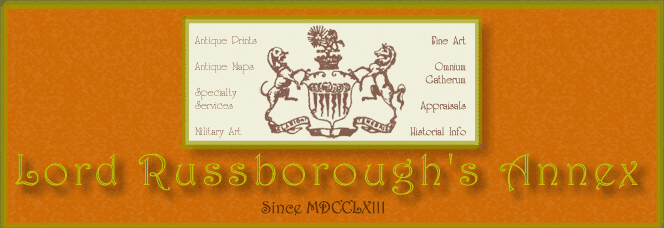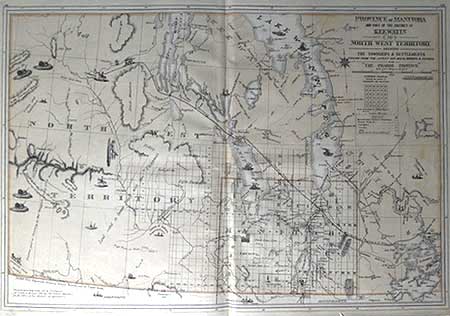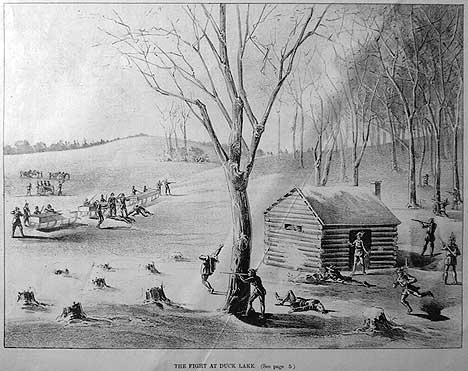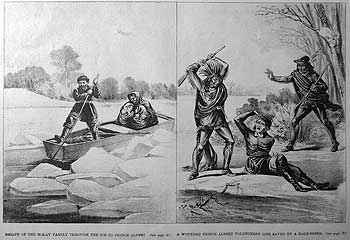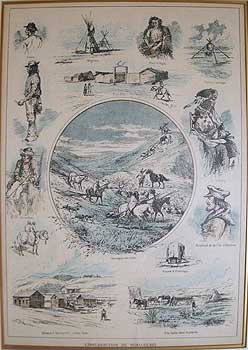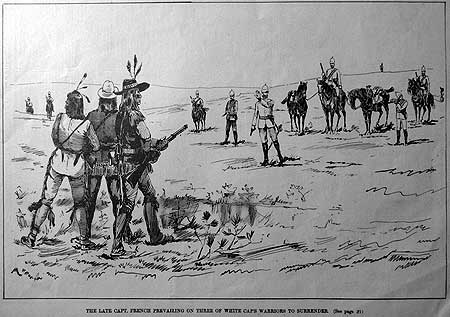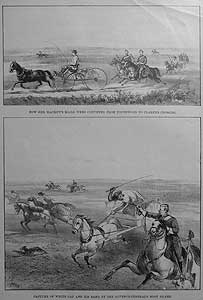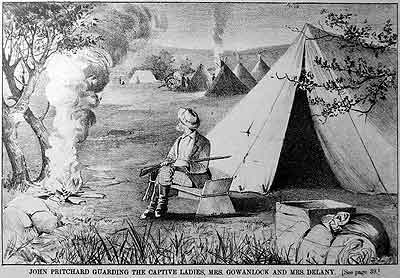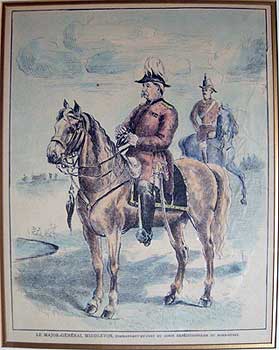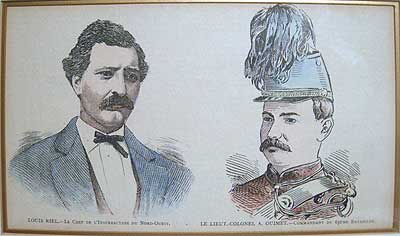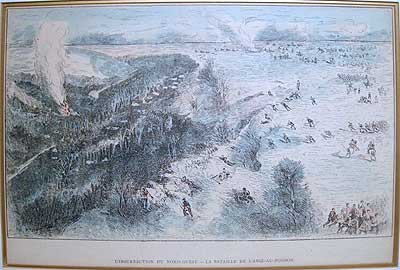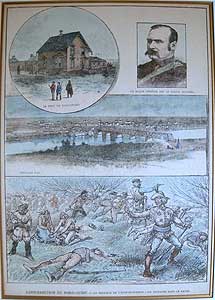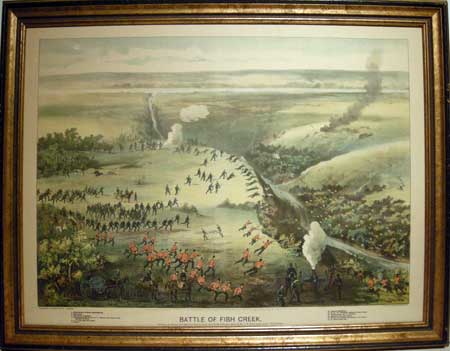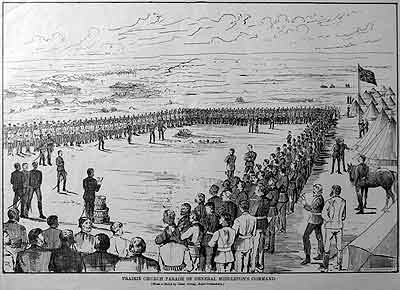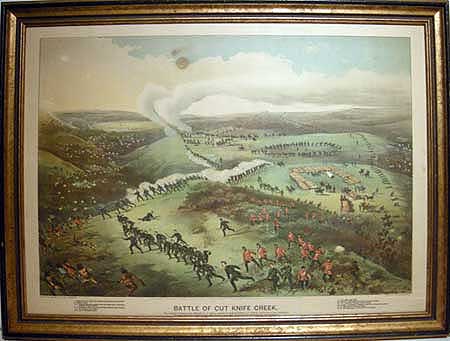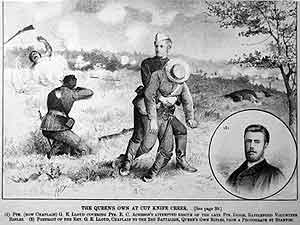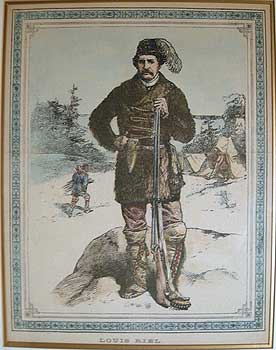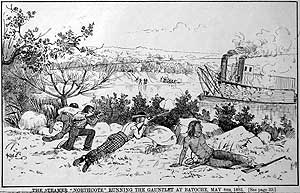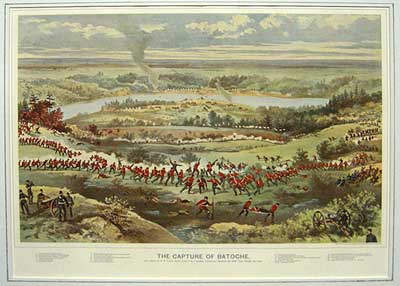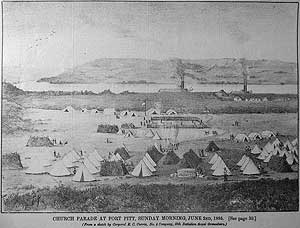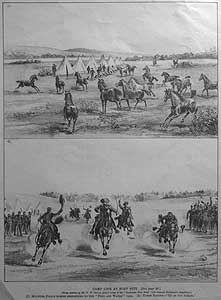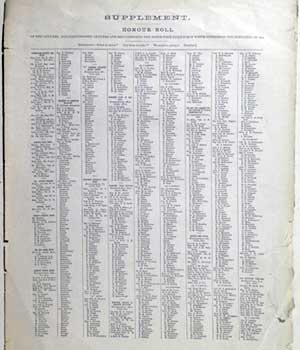The North West Rebellion 1885 - the military option
For three months following his arrival at Batoche, Riel assisted the Métis and white settlers alike in trying to obtain title or scrip to the un-surveyed lands that they had settled. He also petitioned Ottawa to address the grievances over the prices paid by the H.B.C. to trappers. As they had the many others, Ottawa chose to ignore this petition. Instead, “Old Tomorrow” Sir John A. McDonald, completely misjudged the mood of the people and chose to send N.W.M.P. reinforcements to contain the situation.
Riel meanwhile, had been gathering support in opposition to the Roman Catholic Church. Some settlers and treaty Indians, found his intention of declaring a provisional government too extreme, and therefore did not heed the call to arms issued by Riel on March 18, 1885, upon hearing the dispatch of police reinforcements under Col. Irvine toward Fort Carlton. Nevertheless, the rebellion had begun with Riel and Dumont at the head of the Métis cavalry.
The first skirmish took place on 26th March at Duck Lake (see items 2 & 3) near Fort Carleton when Dumont attacked Major L.N.F. Crozier, the superintendent of the N.W.M.P. at Battleford, and his force of 53 police officers and 41 Prince Albert volunteers. Riel rode, crucifix in hand to inspire the Métis with religious fervor, like a latter-day Joan of Arc. Crozier withdrew defeated, with 12 of his force killed. Having been joined by Col. Irvine’s 108-man force and deciding that Fort Carlton was untenable, they decided to retreat to Prince Albert which they then stockaded.
The recalcitrant Big Bear and his band of Wood and Plains Cree Indians had refused to be party to Treaty# 6, in large measure because it was the H.B.C. that received the profit from the sale of what the Indians considered correctly to be their ancestral land. Hearing of the Métis victory at Duck Lake, a blood thirsty group of Plains Cree instigated by Imasees, massacred the inhabitants of the hamlet of Frog Lake on April 2. (see items 4, 5, 9) They then went on to pillage the N.W.M.P. post at Fort Pitt which was commanded by the son of the novelist Charles Dickens, Inspector F.J. Dickens, who retreated with 20 of his men to Battleford. Chief Poundmaker’s rebellious Cree, when informed of the Métis victory at Duck Lake, took to looting the countryside around the Battleford reserve. (see item 6) The West was aflame, with the N.W.M.P. in a hopeless situation. The NWMP. were facing an imminent Indian uprising being a last desperate attempt to regain their freedom and the independence of their land from the white man. Despite cutting the Telegraph lines, the news was out and reached Ottawa via Winnipeg. (March 22th.) A near-hysterical Ottawa ordered mobilization of all troops in Canada. (see item 11)
Although only about 1,000 rebels actually took up arms, (see item 7) the potential threat was of some 20,000 on the war path. Therefore, food relief and supplies where quickly dispatched to placate wavering bands of Indians lest they too should rebel. Scrip was also finally issued to the Métis and half breeds. Had this been done in 1883/4 the rising might never have occurred.
Riel, obsessed with religious matters, lost the military initiative and failed to fully appreciate the changes that have been brought about in communications by the development of the telegraph and railway. In all a total of 7,982 troops, 500 N.W.M.P., nine field canons and two Gatling machine guns were assembled against the rebels, (including 396 men raised from Port Hope's Midland Battalion.) In spite of the long and particularly hard winter of ’85, and four gaps in the Canadian Pacific Railway totalling nearly 100 miles, Van Horne (the C.P.R. CEO.) managed to transport, via the railway and sleighs, both troops and supplies to Winnipeg within 4 to 9 days - a remarkable feat of logistics.
From three bases of operations the columns advanced. The intransigent Maj. Gen. F. Middleton, Commander-in-chief of the Canadian militia (see item 10), advanced with 800 men from Qu’Appelle toward Batoche, splitting his men into two columns, one each side of the river at Clark’s Crossing, thus reducing their effectiveness. From Swift Current Lt. Col. W. D. Otter set out for the relief of Battleford and from Calgary, Maj. Gen. T.B. Strange advanced via Fort Edmonton and the North Saskatchewan toward Fort Pitt against Big Bear’s Indians. Middleton proved to be an inept commander, out of touch with the principles of warfare concerning the maneuverability of troops to combat guerrilla tactics. The first engagement was at Fish Creek 24 April, (see items 12-14) where the Métis succeeded in checking Middleton’s advance.

